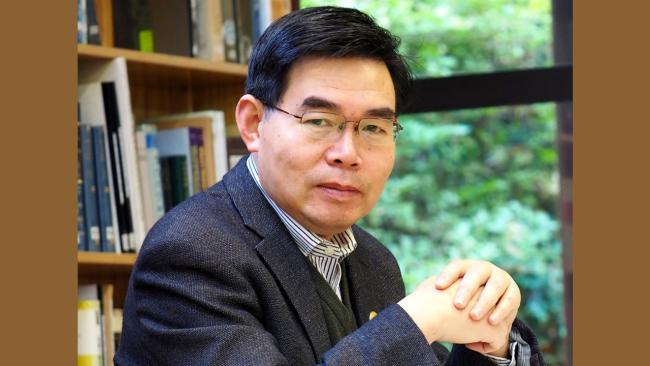
Sanxingdui bronzes and metallurgical network in the Shang dynasty
The China Forum seminar on Tuesday 17 October 2023 was delivered by Professor Jianjun Mei (Director, Needham Research Institute and Fellow, McDonald Institute for Archaeological Research, University of Cambridge; Fellow of Churchill College Cambridge).
Professor Mei’s lecture addressed the Sanxingdui archaeological site in Guanghan county, Sichuan province. The site was discovered in 1986. It contains a wealth of bronze artefacts from the Shang Dynasty in the second millennium BC. It sheds new light on bronze technologies and networks in Ancient China. The majority of Sanxingdui bronzes were made of copper-tin-lead alloys, using piece-mould casting technology, which had been developed in the Central Plains before the emergence of the Sanxingdui bronzes. Professor Mei noted that the proportion of raw materials used for bronze production varied between different areas. The soldering process was a key aspect of the bronze technologies. The Sanxingdui site provides rich insights into the socio-economic structure of Shang Dynasty China. The richly diverse Sanxingdui bronzes included weapons, vessels, animals, bells and masks. This raises numerous questions about the rituals, belief systems and institutions within which the bronzes were embedded. The Sanxingdui bronzes were typically cast by craftsmen from the Central Plains and Yellow River region, often using metallic materials sourced from other parts of China. This suggests a complex metallurgical network in China during the Shang Dynasty, with a market structure involving raw materials, craftsmen, and final products, within which Sanxingdui was a nodal point. There are still numerous issues to be explored, including the connections of Sanxingdui with the surrounding regions, encompassing the Eurasian steppe in the northwest and Yunnan-Southeast Asia to the south.
Issues discussed in the Q&A included: the volume of information available for research on Sanxingdui; the extent to which there was an advanced mode of production and organization behind the Sanxingdui objects; what light the Sanxingdui objects shed on the economic structure and civilisation of Shang Dynasty China; the sources of raw materials for the production of Sanxingdui objects; the wide extent of the communication and economic networks for bronze production and distribution; and the economic base and socio-political structure behind the Sanxingdui civilisation and the reasons for its disappearance.
Jianjun MEI is Director of the Needham Research Institute in Cambridge. He holds concurrent positions as Director of Research at the McDonald Institute for Archaeological Research, University of Cambridge; Visiting Professor of the University of Science and Technology Beijing; Editor-in-Chief of the editorial board for Advances in Archaeomaterials. He has also served as a member of the editorial board for journals such as Kaogu (Archaeology), Kaogu xuebao (Acta Archaeologica Sinica), Xiyu yanjiu (Studies of the Western Regions), Ziran kexueshi yanjiu (Studies in the History of Natural Sciences), Journal of Archaeological Science, and Archaeometry. His primary research interests are the history of metallurgical technology in China and the history of scientific and technological exchanges between China and other countries. He has published three monographs and more than one hundred academic papers in both Chinese and English.





